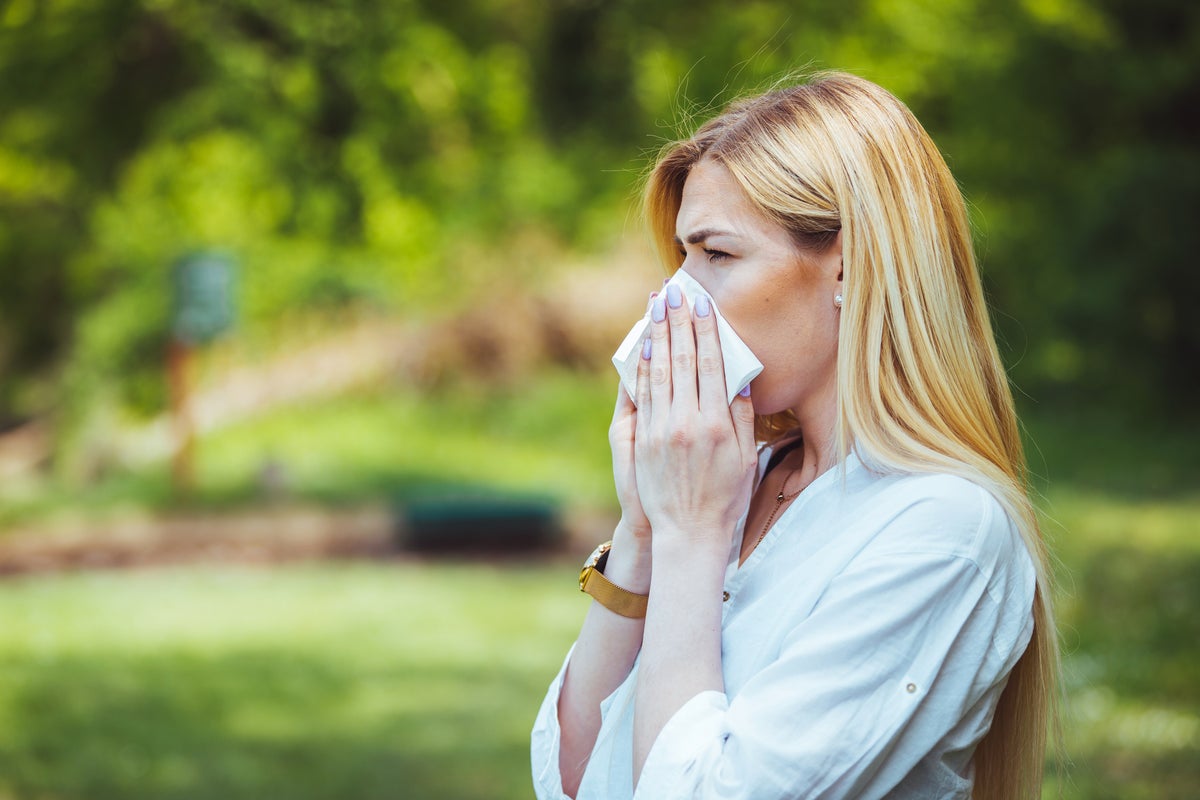
There’s no escape from it — pollen is in every U.S. state, ready to torment your nostrils.
The seeds rain down from the trees in a strange yellow haze and ascends to the skies from the flowers and grasses. Even if you could easily pack up and move, nowhere is safe to avoid the dreaded, sniffling effects of seasonal allergies.
“It’s a little bit like playing Russian Roulette,” Hannah Jaffee, the director of research at the Asthma and Allergy Foundation of America, told The Independent. “If you already have allergies, you can be exposed to an entirely different set of allergens if you relocate.”
“Worst case scenario: you may live in a place and either not have allergy symptoms or have mild allergy symptoms. Then, you move somewhere else and start developing significant symptoms,” she added.
Everyone is going to respond differently to a new location.
“If you already have allergies, you can be exposed to an entirely different set of allergens if you relocate. So, you might be trading some symptoms for others.”
“And then, in some cases, your symptoms might improve by relocating,” Jaffee said.
More than 100 million Americans live with various types of allergies and over 81 million have seasonal pollen allergies.
Some are genetically predisposed to develop allergies, which can factor into what they’re allergic to and potentially how severe their symptoms would be.
Many people develop allergies as they age and their immune system weakens.
Seasonal allergies, which are also commonly known as “allergic rhinitis” or hay fever, occur when people are exposed to pollen.
The inflammatory response can cause sneezing, congestion, a runny nose, or red, watery, and itchy eyes. For people with asthma, it can lead to an asthma attack. For tens of thousands of people, it may even result in a trip to the emergency room.
The severity of allergy symptoms also depends on where you live. There are three main types of pollen, including tree, grass, and weed. This year, the highest tree pollen levels were forecast across a wide swath stretching from the Pacific Northwest to the Southeast.
The highest weed pollen levels were expected around the Plains states, the Carolinas, and along the Gulf Coast.
The foundation also released what it named the nation’s top 10 cities for seasonal allergies, with most located in the South and Southeast. Historically, the worst cities are in those regions, Jaffee noted.
“That’s because these are climates that tend to be more humid and warmer, so they kind of favor that growth of pollen and mold,” she explained.
Wichita, Kansas, led the rankings as the worst city for allergy sufferers.
“Since allergies are so different for everyone, you can thrive in the Southeast part of the U.S. and not have any allergies or still experience significant allergy symptoms elsewhere,” Jaffee said. “It’s kind of a mixed bag.”
So, what do you do if you are moving — or want to? Generally, experts recommend that you visit the location for about two to four weeks ahead of time to get a sense of how your body responds, or to visit during different seasons. Talking to an allergist will also be useful for more personalized recommendations.
Still, pollen seasons are getting longer and stronger for everyone.
Human-caused climate change is resulting in earlier seasons, as well, with warmer temperature trapping heat around urban areas, increasing air pollution, and stimulating pollen production. The amount of pollen released by trees is higher and the strength of the allergic response to the tree pollen appears to be stronger.
“There’s no question [that] as there’s global warming, the pollen season is increasing,” Dr, Sanjiv Sur, director and professor of Allergy and Immunology at Baylor College of Medicine, said earlier this year.
What may help ease the pain, if only for right now?
Dr. Neelu Tummala, a clinical assistant professor of otolaryngology at NYU Langone Health, advises that people time taking medications so they are optimally effective, change clothes and take off shoes after spending time outside, and bathe pets.
Jaffee recommends a pollen tracking app, in addition to personalized allergy testing. But, ultimately, there needs to be a wider response.
“Long-term, we should be looking at policy change to reduce the impact of climate change,” said the foundation’s chief mission officer Melanie Carver.
